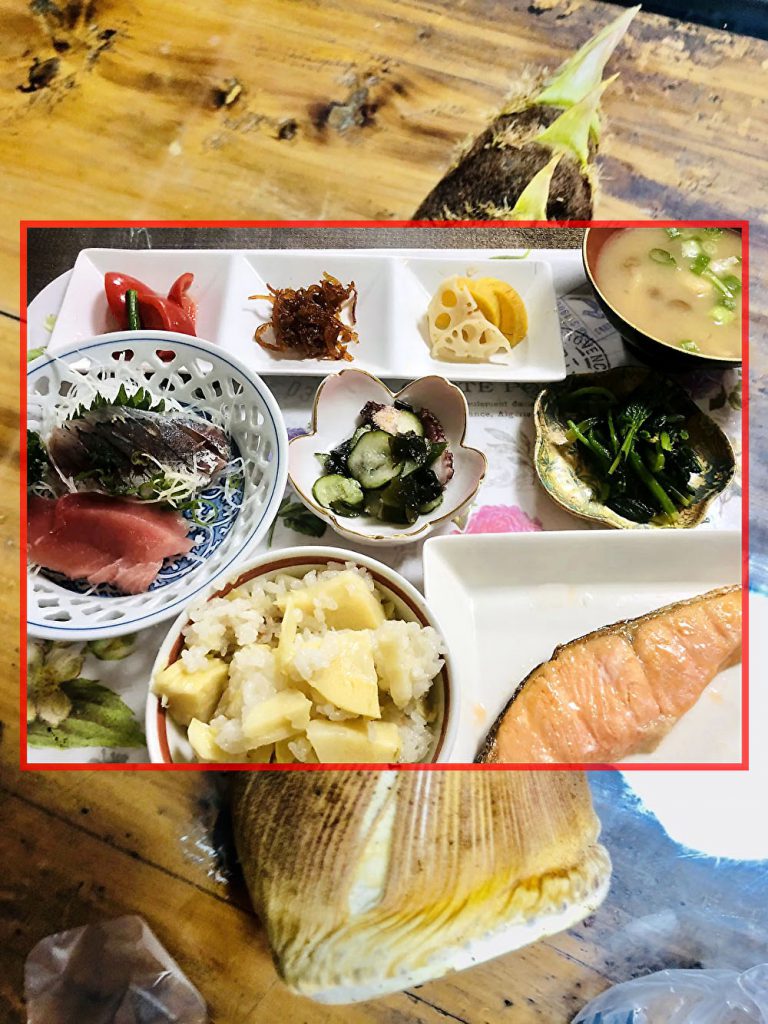
There are three kanji that apply to Umashi. It’s “甘し”(sweet), “旨し”(delicious), and “美し”(beautiful). In modern language, “Umai” means that food is delicious, and “Umai” is a bit vulgar, and men usually use it, but women don’t use it much. “Oishii” is used by both women and men, and is a slightly more elegant word than “Umai”. “Oishii” is often written as “美味しい”, but this is a substitute character, probably a phonological change from the Chinese word “hao chi”. In the old language, “甘し(Umasi)” means this. “Umashi” is also used in modern language to mean “delicious” and means that the food is delicious, but also is used in the style of saying “this picture is well” or “it’s a sweet job”. So we also use “Umashi” by means of that we are satisfied. “Umashi Kuni(Beautiful country)” is almost an idiom and literally means the most honorific word such as beautiful, wonderful, or elegant. That’s why, the above haiku was read as “Umashi kana Takenoko gohan no Umashi Kuni,” and means, “What a wonderful country Japan to have such delicious bamboo shoot rice!”.
うましには三つの漢字があります。甘し、旨し、美しの三つです。現代語で「うまい」と言えばまず食べ物がおいしいと言う意味で、「うまい」はちょっと下品な言葉で、男性は普通に使いますが、女性はあまり使いません。「おいしい」は女性も男性も使い、「うまい」よりやや上品な言葉です。「おいしい」はよく「美味しい」と書きますが、これは当て字で、恐らく中国語の「好吃(ハオチー)」から音韻変化したものと思われます。古語では「甘し(うまし)」がこの意味を表します。「旨し(うまし)」も現代語で「旨い(うまい)」と言って、食べ物がおいしいと言う意味で使いますが、「この絵は旨い」とか「旨い仕事だ」だとか言う風にも使いますから、「旨し」は満足がいくと言う意味なんでしょう。「美し国(うましくに)」はほぼ慣用語で、文字通り美しいとか、素晴らしいとか、麗しいといった最敬語の意味を持ちます。と言うことで、上の俳句は「うましかな たけのこけのこごはんの うましくに」と読み、「美味しいなあ、この筍ご飯が頂ける、なんと素晴らしい国日本なんでしょう」と詠んだつもりです。
